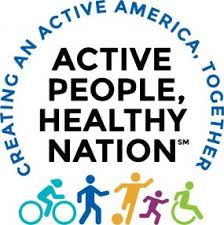by Kate Evans
Included in everyone’s New Year’s resolutions are usually renewed efforts for losing weight, exercising more and getting healthier.
The steps to achieve these goals haven’t changed much over the years, but people revisit their strategy as the New Year starts, with its promise of new beginnings.
The Centers for Disease Control and Prevention and other health sources remind us how we can improve our health this season. 
Activities, diet changes
Pick an activity you enjoy such as walking, dancing or riding a stationary bike and do it for 10 minutes. Work your way up to doing it longer.
Schedule a time to exercise every day when you know you’ll have energy. Set aside that time for yourself.
Make lower-calorie versions of meals that you enjoy by substituting healthier ingredients.
Eat open-faced sandwiches instead of sandwiches with two pieces of bread to cut back on calories and carbohydrates.
Limit your food portions and stay within your daily caloric needs.
Fill half of your plate with vegetables and fruit. Make at least half of the fruit you eat daily be fresh fruit.
Eating a diet rich in vegetables and fruits can decrease one’s caloric intake, reduce the risk of heart disease, protect against certain types of cancers and increase the amount of fiber and potassium that you get, according to the USDA MyPlate information.
Protein foods provide important nutrients and building blocks for maintaining your health and body. Many get the right amount of protein needed from meat, poultry, and eggs, but don’t meet the recommendations for seafood, nuts, seeds, and soy products.
Healthy eating
Start each day with a healthy breakfast. Good choices include eggs, oatmeal, whole grains, yogurt, fruit and a small serving of nuts.
To lose one to two pounds a week, reduce your caloric intake 500 calories a day. That could mean eliminating one soda, one slice of bread and cutting back on your snacks of cookies or crackers.
Eat lean meat, poultry and fish, whole grains, more fruits and vegetables, nuts and low-fat or non-fat dairy products.
Eat more foods that are rich in needed Omega 3 fatty acids-fish and seafood like salmon, cod, sardines, walnuts, avocados, olive oil, flaxseed oil, green beans, broccoli, spinach, cauliflower and Brussels sprouts.
Limit foods that are high in Omega 6 fatty acids including vegetable oils, cookies, cakes, pies, doughnuts, crackers, potato chips, French fries and nuts.
Cut out as much sugar as you can and limit fats.
Drink eight glasses of water daily.
Increase fiber-rich foods like beans and peas.
Eat less junk food and avoid processed foods.
Eat vegetarian a couple of days a week.
Add more movement
Exercise 20 to 30 minutes four to five times a week in whatever form appeals to you.
Use a pedometer and work your way up to 10,000 steps a day. Start with 2,000-3,000 steps.
Get up from sitting at least once an hour and walk around.
Go mall walking or try another indoor activity if you can’t walk outdoors.
Take the kids roller-skating, shoot some basketball hoops or toss a Frisbee or a football.
Put on some of your favorite music and dance for 10-20 minutes.
Try online nutrition or fitness classes, attend fitness or activity classes in person or join a gym.
Sleep & reduce stress
Get seven to eight hours of sleep a night and fresh air and sunshine daily.
Ease stress by walking, daily exercise, avoiding too many commitments, finding solitude and nurturing oneself.
Yoga, meditation, deep breathing and spending time on enjoyable hobbies like music, reading and arts and crafts can help.
List your health and wellness goals and steps you can take to achieve them now.
CDC recommendations
The CDC recommends 150 minutes of moderate exercise or 75 minutes of vigorous exercise a week, along with two days of strength training per week.
Light exercise includes walking very slowly, playing most musical instruments, working at the computer and washing dishes or cooking, according to harvard.edu.
Moderate exercise includes walking briskly, light yard work or gardening, light bicycling, heavy cleaning and active play with kids.
Vigorous activity includes jogging, running, swimming laps, tennis, soccer, dancing and cross-country skiing.
Obesity adds health risks
The Centers For Disease Control (CDC) website notes that being overweight or obese can make you a higher risk for medical conditions such as heart disease, stroke, Type 2 diabetes, insulin resistance, depression, asthma, sleep apnea, high blood pressure, high cholesterol and triglycerides, metabolic syndrome and cancer.
A weight loss of 5-10% percent of your total body weight will produce health benefits that can include decreases in high blood pressure, high cholesterol and high blood sugar levels.
Consult your physician before starting any new exercise regime or radically altering your eating habits.



